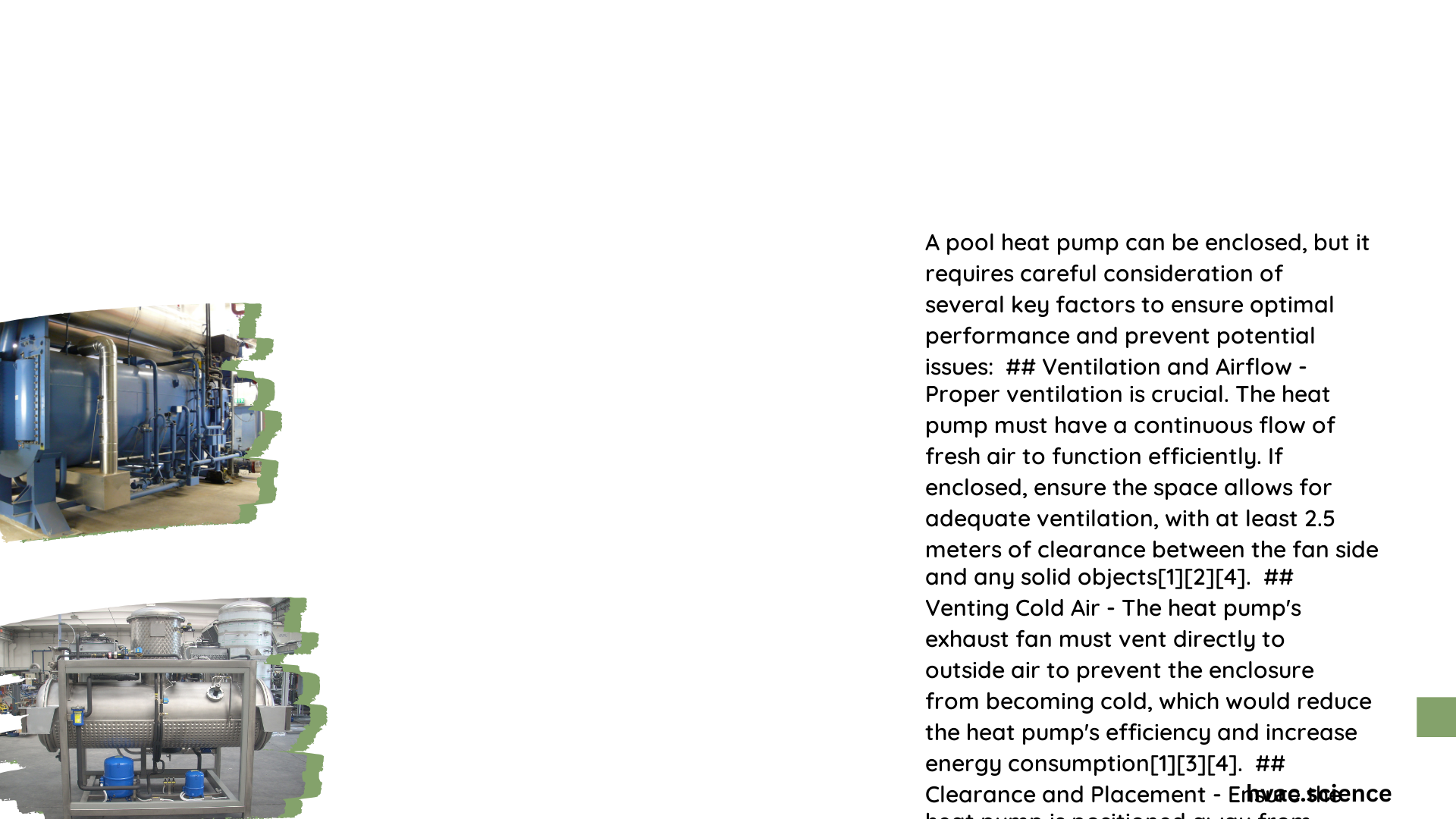Pool heat pumps can be enclosed, but this process requires meticulous planning and adherence to specific technical guidelines. Homeowners must carefully consider ventilation, airflow, clearance requirements, and material selection to ensure optimal performance and prevent potential operational issues. The right enclosure can protect your heat pump from environmental elements while maintaining its efficiency and extending its operational lifespan.
Can Pool Heat Pump Be Enclosed Safely?
Pool heat pumps can indeed be enclosed, but the enclosure must meet critical performance and safety criteria. The primary considerations include maintaining proper airflow, ensuring adequate ventilation, and providing sufficient clearance for optimal heat exchange.
What Are the Critical Ventilation Requirements?
- Airflow Considerations
- Minimum 3500 CFM air movement required
- No obstructions blocking air intake or exhaust
-
Prevent hot air recirculation
-
Clearance Specifications
| Area | Minimum Clearance | Recommended Clearance |
|——|——————-|————————|
| Sides | 12 inches | 24 inches |
| Top | 5 feet | 6 feet |
| Front | 30 inches | 36 inches |
What Materials Work Best for Enclosures?
Wood Enclosures
- Cost-effective ($2-$10/sq ft)
- Moderate durability
- Requires additional weatherproofing
Metal Enclosures
- Higher durability ($5-$20/sq ft)
- Better protection against elements
- Potential for integrated ventilation systems
Composite Materials
- Superior thermal insulation
- Highest durability ($10-$30/sq ft)
- Excellent long-term performance
How Can Noise Be Minimized?
- Use sound-absorbing materials
- Install louvered exhaust fans
- Position away from living spaces
- Implement acoustic barriers
What Performance Impacts Should Be Expected?
- Potential energy efficiency improvements
- Reduced environmental exposure
- Extended equipment lifespan
- Noise reduction up to 40%
What Are Potential Risks of Improper Enclosure?
- Reduced heat pump efficiency
- Overheating
- Restricted airflow
- Potential equipment failure
- Voided manufacturer warranty
Key Recommendations for Successful Enclosure

- Prioritize ventilation over aesthetic considerations
- Consult manufacturer guidelines
- Use professional installation services
- Regular maintenance checks
- Monitor heat pump performance post-enclosure
Professional Installation Considerations
- Professional assessment of specific site conditions
- Custom enclosure design
- Compliance with local building codes
- Proper electrical and structural integration
What Budget Should Be Anticipated?
- Basic DIY enclosure: $200-$500
- Professional custom enclosure: $800-$2,500
- High-end integrated solutions: $2,500-$5,000
Maintenance Tips for Enclosed Heat Pumps
- Quarterly ventilation system inspection
- Annual professional maintenance
- Clean air intake and exhaust areas
- Check for potential moisture accumulation
- Verify structural integrity of enclosure
Conclusion
Enclosing a pool heat pump is possible with careful planning, proper materials, and adherence to technical guidelines. Success depends on understanding specific requirements and implementing a well-designed solution.
Warning Signs of Improper Enclosure
- Reduced heating efficiency
- Unusual noise levels
- Increased energy consumption
- Visible equipment strain
Reference:
– Zealux Pool Heat Pump Enclosure Guide
– Heat Pump Installation Tips
– Pool Equipment Enclosure Forum
